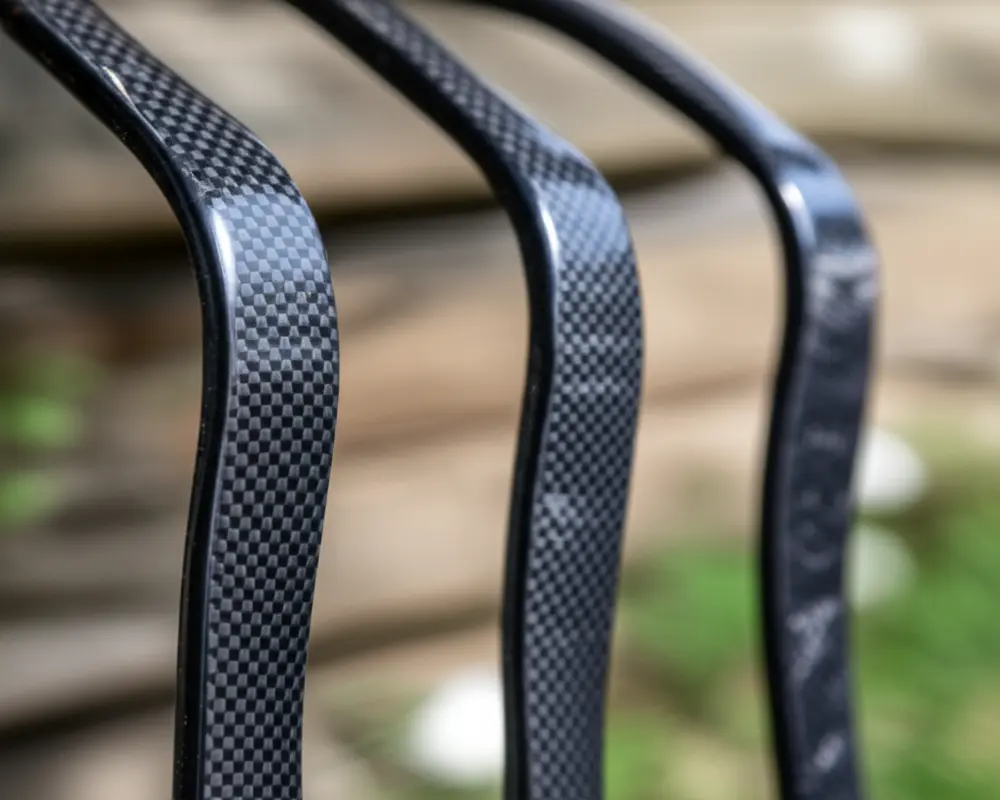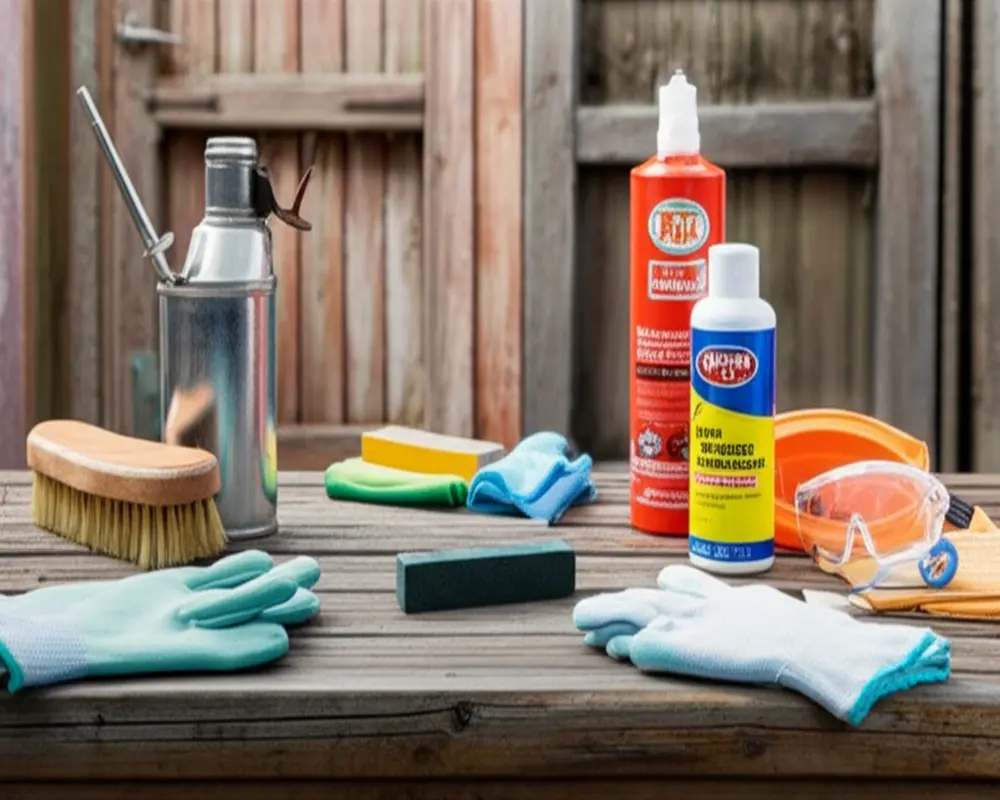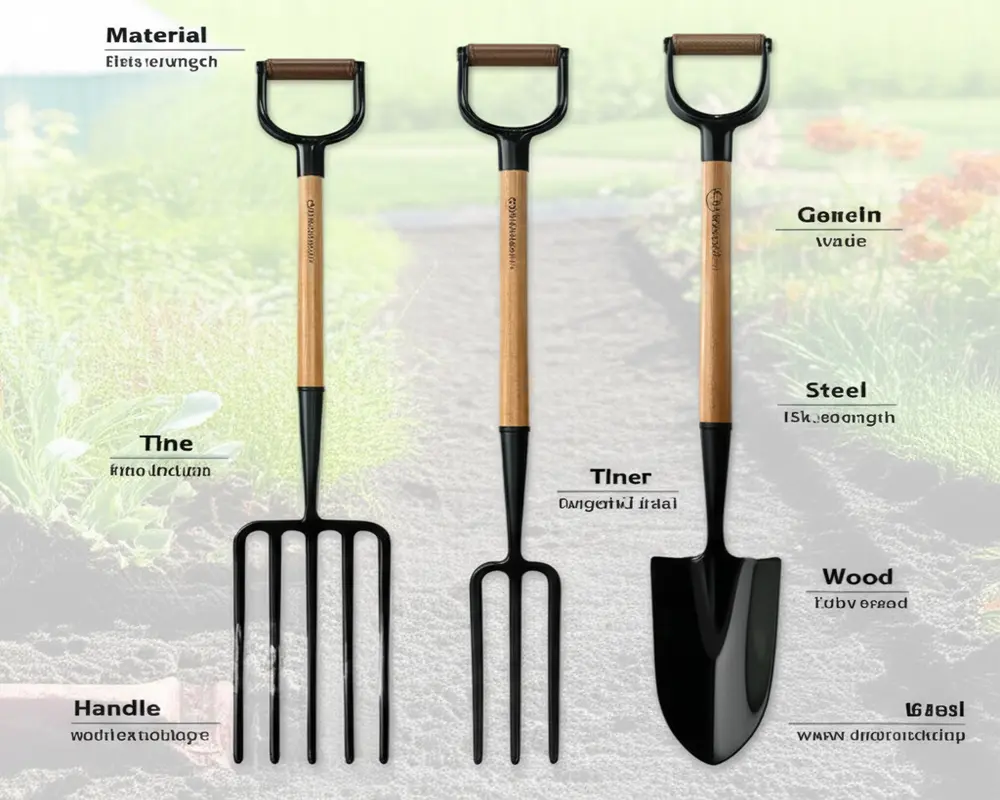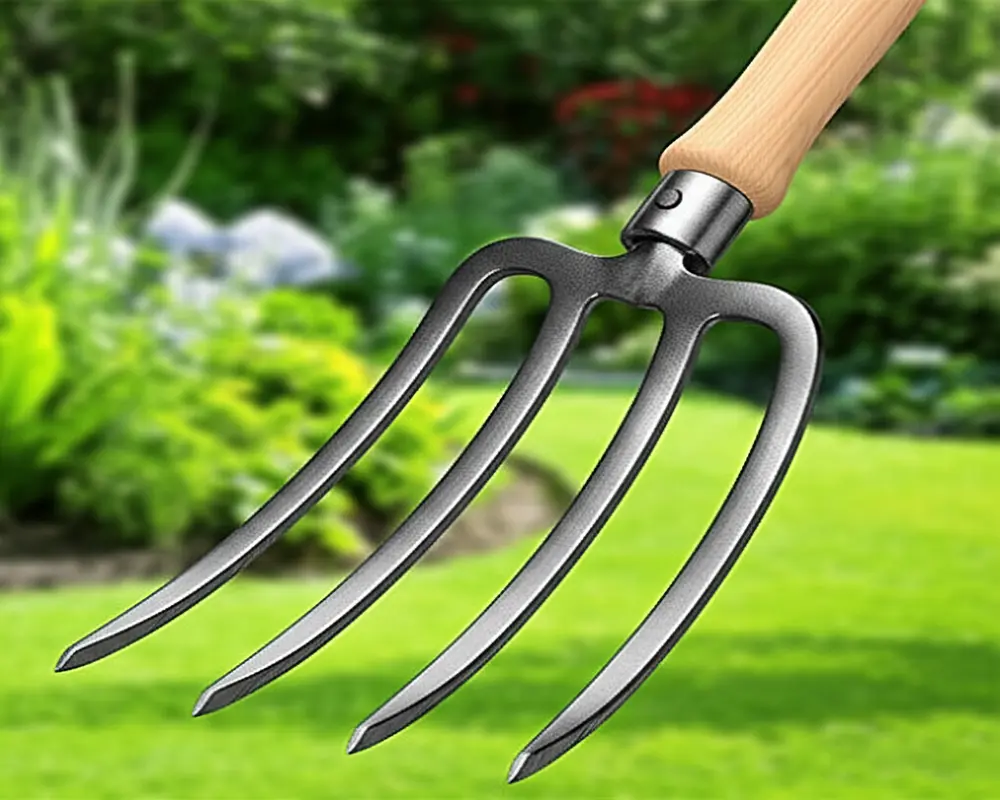Garden Fork Durability: Your Guide to Lasting Tools in 2025
Garden fork durability stands as a pivotal factor in choosing tools that offer long-term performance and reliability for both amateur and professional gardeners. Understanding what makes a garden fork durable goes beyond its appearance and price tag—it’s about materials, design, maintenance, and practical use. This guide explores each critical element so you can select and care for a garden fork that withstands the rigors of everyday gardening, delivering value well into the future.
1. Introduction: The Importance of Garden Fork Durability
Investing in a durable garden fork is economically sound and environmentally responsible. Low-quality forks often fail prematurely, leading to repeated replacements that burden both the wallet and the planet. Durable garden forks minimize waste and reduce the need for manufacturing additional tools, aligning with sustainable gardening practices.
In this context, garden fork durability is defined as the tool’s ability to maintain structural integrity, resist wear and corrosion, and perform effectively over an extended lifespan with proper care.
This comprehensive guide dissects the core materials, construction techniques, usage factors, and maintenance protocols essential for maximizing the longevity and performance of your garden fork. It also includes expert reviews of the best options available in 2025.
2. Core Factors Affecting Garden Fork Durability
2.1 Tine Materials and Strength
The tines are the primary components subjected to soil pressure and impact, making their material composition crucial.
2.1.1 Forged Carbon Steel: Process and Durability
Forged carbon steel is widely regarded as the benchmark for strong, durable garden fork tines. The forging process involves heating the steel and shaping it under high pressure, which aligns the internal grain structure, enhancing strength without compromising toughness.

These tines resist bending and snapping under heavy loads, making forged carbon steel forks a top choice for demanding soil conditions. They tend to hold their shape and resist fatigue, crucial for digging and turning dense soils.
2.1.2 Stainless Steel Grades and Corrosion Resistance
Stainless steel grades vary by chromium content and alloy compositions. High-grade stainless steel tines resist rust and staining, especially in damp or acidic soils. While not as strong as forged carbon steel, specialized stainless alloys bridge the gap by offering good corrosion resistance paired with moderate strength.
2.1.3 Boron Steel for High Abrasion Resistance
Boron steel adds boron to the alloy, significantly increasing wear resistance. This is especially beneficial when working rocky or abrasive soils. Boron-enhanced tines maintain sharp edges longer and respond well to repeated impact stresses.
2.1.4 Tine Thickness and Shape Effects
Thicker tines offer more strength and are less prone to bending but may sacrifice penetration ease. Conversely, thinner tines penetrate easily but risk deformation under strain. The shape—whether straight, slightly curved, or tapered—also impacts the distribution of stress and durability.
2.2 Handle Materials and Their Strengths
The handle serves as the leverage point and shock absorber, influencing both comfort and durability.
2.2.1 Premium Ash Wood Characteristics
Ash wood remains a classic choice for handles due to its combination of light weight, flexibility, and shock absorption. Well-seasoned ash resists splitting and is easy to replace if damaged.
2.2.2 Fiberglass Handles: Strength and Weather Resistance
Fiberglass is favored for its weather resistance and durability. It does not warp or rot, offering longer-term stability in humid climates. Furthermore, fiberglass handles often incorporate ergonomic designs to reduce strain.
2.2.3 Tubular Steel Handles: Rigidity and Corrosion
Steel handles bring rigidity and strength but can be heavy. They require protective coatings to prevent rust. Despite this, tubular steel handles excel in durability, especially for heavy-duty use.
2.3 Handle-to-Head Connection Methods
The point where the handle meets the fork head is a common failure site, so connection durability is paramount.
2.3.1 Solid Socket Construction Advantages
Fully enclosed solid sockets provide robust joint strength and reduce wobbling. This method minimizes stress concentration and enhances longevity.
2.3.2 Reinforced Strapped Sockets and Potential Stress Points
Strapped sockets involve metal bands securing the handle to the head. While easier to repair and manufacture, they can develop stress points where straps are fastened.
2.3.3 Bolted or Riveted Connections: Common Weaknesses
Bolts or rivets may loosen over time, causing the head to detach or wobble. Regular inspection and tightening are necessary to avoid failure.
2.4 Construction Techniques
2.4.1 Fully Forged Design Benefits
Fully forged garden forks, where the head and tines are crafted from a single piece of metal, offer unmatched strength and resilience. The continuous grain structure reduces failure risks at joints.
2.4.2 Welded Assemblies and Stress Risks
Welded components may introduce weak points if not properly executed. Heat-affected zones can become brittle, increasing the chance of cracking under strain.
2.5 Ergonomics and Design Features for Durability
Ergonomic design does more than increase user comfort; it strategically distributes force to extend tool life. Features such as reinforced handles, shock-absorbing grips, and balanced weight allocation reduce user fatigue and operational stress on the tool.
3. Common Failure Points and Prevention Strategies
Understanding typical failure points equips gardeners to proactively address longevity challenges.
3.1 Causes of Bent or Broken Tines
Over-aggressive leverage, hitting rocks, and overloading moist heavy soil often lead to bent or fractured tines. Choosing the right tine thickness and material for your soil conditions minimizes this risk.
3.2 Reasons Behind Snapped Handles
Improper usage angle, excessive twisting forces, and poor-quality wood or fiberglass can cause handle breakage. Inspect handles regularly for cracks or splinters and replace them promptly.
3.3 Issues Leading to Loose or Detached Heads
Looseness typically stems from deteriorated handle-to-head joints, commonly caused by weathering or repetitive movement. Tightening straps or bolts and reinforcing sockets can prevent detachment.
3.4 Rust and Corrosion: Effects and Protection Tips
Rust weakens metal tines, accelerating failure. Applying protective coatings, cleaning after use, and avoiding prolonged exposure to moisture preserve the fork’s metallic components.
4. Maintenance Tips to Extend Garden Fork Lifespan
Routine care significantly prolongs the functional life of your garden fork.
Immediately after use, remove soil debris and rinse the fork with water. Dry thoroughly to prevent moisture-related damage. Regularly apply a light coat of oil or wax on metal parts to inhibit rust formation.

Wooden handles benefit from occasional sanding and application of linseed oil to maintain flexibility and resistance to cracking. Check bolts and screws periodically, tightening or replacing as needed.
Use a file or sharpening stone to maintain tine edges for effortless soil penetration, reducing stress during use.
Store the fork in a dry, sheltered environment, preferably hanging to avoid ground contact. Avoid using the tool beyond its intended purpose to prevent overstress damage.
5. Selecting a Durable Garden Fork
Choosing the right garden fork involves a balance of material quality, construction, user needs, and budget.
Prioritize forks with high-grade steel tines, robust handle materials, and secure handle-to-head connections. Consider brand reputation, warranty offers, and verified user reviews to assess real-world durability.
Value is not solely about low price; evaluate the fork’s expected lifespan and maintenance ease relative to cost.
Match fork selection to soil type and intended gardening tasks to optimize tool lifespan and user efficiency.
For further guidance on selecting precision tools, consider exploring the detailed guide on Japanese garden spades, which shares design philosophies applicable to forks as well.
6. Reviews of Top Durable Garden Forks in 2025
We evaluated numerous garden forks based on material strength, construction integrity, user feedback, and performance tests. Below are top picks of 2025:
6.1 Best Heavy-Duty Digging Fork
This model features fully forged carbon steel tines with reinforced tubular steel handles, accommodating tough soil conditions and rigorous use. Its solid socket connection minimizes joint failure.
6.2 Best Stainless Steel Fork for Rust Resistance
Utilizing top-tier stainless steel alloys, this fork offers unparalleled corrosion resistance ideal for humid or coastal gardening environments.
6.3 Best Value Durable Garden Fork
Balancing cost and durability, this fork includes boron steel tines for abrasion resistance and a fiberglass handle for weatherproof strength, ideal for gardeners seeking dependable performance without premium pricing.
6.4 Best Durable Border and Cultivating Fork
Designed with ergonomics in mind, this fork sports slightly curved tines for delicate soil cultivation along borders, crafted from forged steel for longevity.
6.5 Specialist Forks for Rocky or Niche Soil Conditions
Specialized forks incorporate heat-treated boron steel and enhanced tine geometry to withstand rocky, compacted soils and prevent frequent damage.

For a curated selection of ergonomic garden spades complementing your fork for diverse gardening needs, review our article on ergonomic garden spades.
7. Sustainability and Environmental Benefits of Durable Tools
Using durable gardening tools like robust garden forks contributes to sustainability by reducing waste and limiting resource consumption for replacements. Durable tools enhance the gardening experience, enabling users to maintain garden health efficiently and with fewer interruptions caused by equipment failure.
8. Frequently Asked Questions About Garden Fork Durability
Q1: What is the expected lifespan of a high-quality garden fork?
A well-made garden fork can last 10 to 20 years or more with proper maintenance, depending on usage intensity and soil conditions.
Q2: Can I repair a broken garden fork?
Minor damages like bent tines or loose heads can often be repaired by a professional or skilled user. However, severe structural damage may require replacement for safety and effectiveness.
Q3: How does weight correlate with durability?
Heavier forks tend to be more durable due to thicker steel and stronger handles but may cause user fatigue. The key is balancing weight with ergonomic design.
Q4: What are the best rust prevention practices?
Clean after each use, dry thoroughly, apply protective oils, and store in a dry environment. Regular inspection and prompt maintenance prevent rust formation.
Q5: Do polished finishes affect durability?
Polished finishes often provide a protective layer against corrosion but may wear off over time. They can facilitate soil release, reducing rust risks.
9. Conclusion: Making Informed Choices for Long-Term Gardening Success
Smart investment in a durable garden fork pays dividends in efficiency, safety, and sustainability. Understanding the interplay between material properties, construction methods, and maintenance practices empowers gardeners to choose tools that remain reliable year after year. Use this guide as a foundation to select and maintain garden forks that elevate your gardening experience while minimizing environmental impact.
For detailed insights on complementary garden tools and pruning equipment, explore our comprehensive reviews on best garden spades and best pruning shears.

